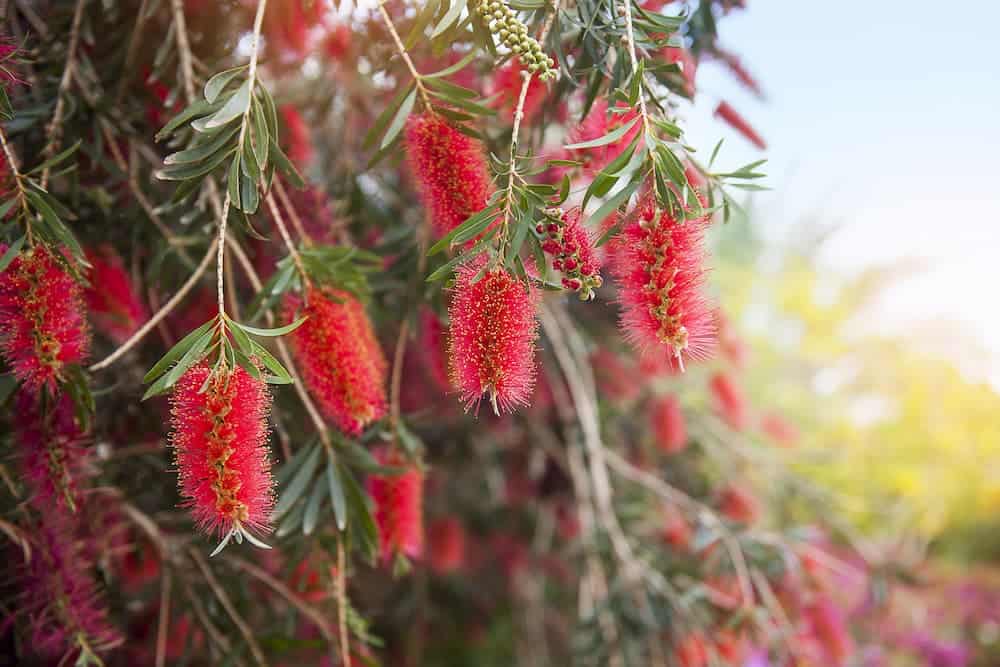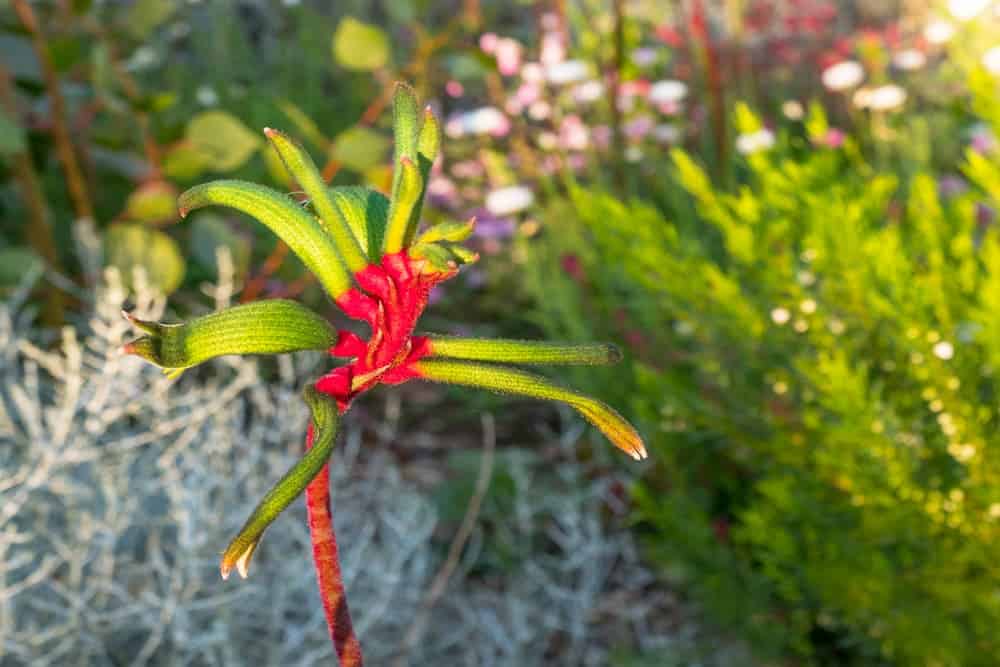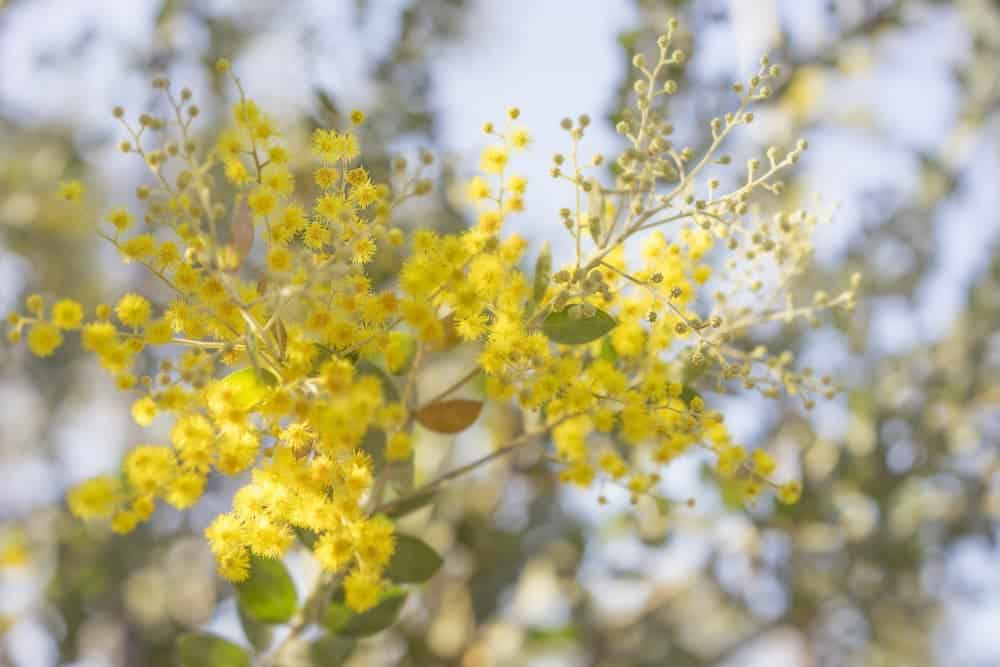If you’re thinking of giving your garden a makeover, why not create one that showcases the beauty of Australian native plants? They are locally available and will thrive in our climate and soil conditions. Plus, there is more than enough plant types to choose from, whether you need some for hedging or decorating.
Reasons for Growing Australian Native Plants
Caring for plants native to Australia not only gives you a home-based oasis. Here’s a list of how choosing to grow our flora can benefit you and the environment:
- It saves money. Native plants are generally low maintenance. You don’t need to tend them as often or use fertilisers. Most are also pretty hardy and can grow with rainfall alone.
- It creates a healthier environment. Without the need for pesticides or fertilisers, your native garden will not bring chemicals into our soil and waterways.
- It protects local animals. Your Australian garden can double as a home or source of food plants for native birds, insects and small mammals.
- It preserves biodiversity. Land development often leads to removal of Australian plants. Growing them in our backyard can keep local plant species abundant. In turn, we get to enjoy healthy ecosystems and soil, clean air and water, and a good climate for food production. Most of our plants are also endemic, and if we don’t help out, we might lose them forever.
Ready to start planting? Here are some Australian native plants and flowers that are easy to grow.
Hedge Plants
Hedge shrubs or bushes in the garden are versatile plants. Aside from blocking out noise or ensuring privacy, blooming hedge plants look and smell fantastic. If you want to enhance your curb appeal, growing them along your walls or fence can work wonders, too.
Mint bush
If you prefer a hedge with scented leaf, start planting mint bushes along paths or near your windows. The native shrubs give off a soothing mint fragrance, while its flowers can attract butterflies and birds. The round-leaf variety (Prostanthera rotundifolia) is the easiest to grow.
Its leaves traditionally serve as cold and headache medicine. Now, they often end up in the kitchen as a culinary herb. It’s not a very drought-tolerant plant, though, and tends to droop when drying out. Make sure to give it ample water and feed with native fertiliser to prevent root burn.
Lilly-pilly
Lilly-pilly, or cherry surprise, is another one of our many hardy, low-maintenance Australian native plants. It’s a favourite for hedging as it can grow tall rather quickly. Grow it in well-composted soil along your fence or driveway, and you get a natural screen for privacy.
Lilly-pillies like cool climates, and in the summer, small white flowers bloom followed by pink berries that you can use for jam-making. If you like multipurpose plants like this, check out our leafy options that can double as toilet paper substitutes!
Bottlebrush
Callistemon plants are the ideal choice for growers that lack a green thumb. They are hardy, fast-growing and resistant to frost and drought. Plant them in areas with well-drained soil and full sun. From spring to summer, their stunning red flowers attract bees and nectar-eating birds. Possums, flying foxes and lizards love using them as homes, too.

Ground-Cover Plants
If you have empty spaces in your garden, native ground-cover plants can fill them out. They come in various sizes and colours, too, so they can easily blend in with your existing plants. Aside from attracting bees and butterflies, these plants are your key to controlling erosion and retaining soil moisture.
Happy wanderer
It’s a strange name, but once you plant this in your garden, you’ll know exactly why. Well-drained soil, a little water and bit of shade are all it needs to start wandering up your walls or trellises. Purple pea flowers come out in winter through spring. There are mauve, pink and white Hardenbergia varieties, too, if you wish something to match your garden plants.
Grevillea
To grow a variety of Australian native plants in your garden, go for Carpobrotus or grevilleas. With over 350 species to choose from, you can easily make a green space full of their vibrant spider flowers.
If you live in inland or coastal regions, try growing Aussie ramblers or pigfaces. These hardy plants with succulent leaves can control weeds and withstand frost, drought, salt and humidity. Plus, their deep pink flowers will surely impress house guests and even the birds and bees.
Kangaroo paw
This iconic plant suits pots and garden beds, making it ideal for apartment dwellers or small spaces. Kangaroo paw prefers acidic, well-drained soil, full sun positions and temperate climate, like in Adelaide, Melbourne and Sydney. In late winter to summer, woolly red flowers start to blossom. The iridescent blooms are also full of nectar for native animals and insects to enjoy.

Pot Plants
Of course, not all of us have room for a sprawling garden. Good thing the nursery industry has developed and introduced local plants and native flowers in Australia that grow well in pots. Now, all of us can fill up empty spaces and attract nectar-eating animals to our garden no matter its size.
Wattle
Acacia (golden wattle) is our national flower. It’s also the star of Wattle Day, which marks the official start of Australian spring. Its all-familiar yellow flower balls are rich in pollen, making them valuable for native bees.
And while it is a popular choice for hedging, compact varieties can add beauty and character to smaller gardens. Trailing types, for instance, suit hanging or tall planters. For short round pots, dwarf acacias are best. Just make sure to find a sunny position or spot with light shade.
Fan flowers
Scaevola plants are a favourite for gardens with hanging baskets. Their natural fan-like arrangement of purple or blue flowers may seem dainty, but these sun-loving plants are hardy and easy to maintain. And while there are several types to choose from, the zigzag variety is a great starter. Aside from its stunning white and purple flowers, it favours mixed container planting with other native plants like wattles and banksias.
Banksias
Finally, if you prefer Australian native plants that can last for many years, dwarf banksia is an excellent option. This more compact species suits container planting for patios or courtyards. Its natural rough form also has the bonsai appeal, which you can further enhance by growing it in squat containers.
And then there’s its striking spiny and tubular flowers. These flowers are not only fascinating. They are also full of nectar that spinebills and honeyeaters love.


